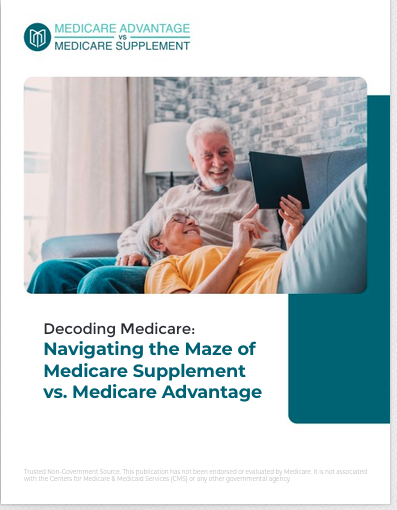Key Takeaways:
- Early planning for Medicare enrollment helps you avoid penalties and ensures you have the right healthcare coverage when you need it.
- Missing crucial Medicare deadlines can lead to lifelong financial penalties and limited access to necessary medical services.
Why You Should Be Thinking About Medicare Enrollment Now—Before It’s Too Late
Medicare is a critical part of your healthcare journey once you turn 65, but it’s essential to think about it well before you reach that milestone. Understanding the key enrollment periods and preparing in advance can prevent costly mistakes, such as late enrollment penalties or gaps in coverage. Whether you’re nearing retirement or still working, taking the time to understand Medicare now will save you a lot of stress later. Here’s why planning your Medicare enrollment today is so important.
What Is Medicare, and When Should You Enroll?
Medicare is a federal health insurance program primarily for individuals 65 and older, but also for some younger people with certain disabilities or end-stage renal disease. While it’s designed to provide essential healthcare services as you age, signing up for Medicare isn’t automatic for everyone. You need to be aware of specific enrollment periods and deadlines to ensure continuous coverage and avoid financial penalties.
The key periods you need to be aware of include the Initial Enrollment Period (IEP), General Enrollment Period (GEP), and the Annual Enrollment Period (AEP). Knowing when and how to enroll during these windows ensures you don’t miss out on important coverage or face lifelong penalties.
The Initial Enrollment Period (IEP): Your First and Best Opportunity
The Initial Enrollment Period (IEP) is the first window of time you have to sign up for Medicare, and it’s perhaps the most important. The IEP starts three months before the month of your 65th birthday, includes your birthday month, and extends three months after. This seven-month window is your chance to enroll in Medicare Parts A and B, as well as Medicare Part D if you want prescription drug coverage.
Enrolling during your IEP is critical because it allows you to avoid lifelong late enrollment penalties. If you miss this window, you may have to wait for the General Enrollment Period, which comes with its own set of complications, including delayed coverage and financial penalties.
What Happens if You Miss the Initial Enrollment Period?
Missing your IEP can be costly in more ways than one. First, if you don’t enroll in Medicare Part B during this time, you’ll face a 10% penalty for each 12-month period that you were eligible but didn’t enroll. This penalty is added to your monthly premiums and lasts for as long as you have Part B coverage, meaning it’s a lifelong cost.
The same applies to Medicare Part D for prescription drug coverage. If you go without “creditable” drug coverage for 63 days or more after your IEP, you’ll incur a penalty of 1% of the national base beneficiary premium for each month you were without coverage. This penalty is added to your monthly premium for as long as you have Part D.
In addition to penalties, missing the IEP often means you’ll have to wait months for your coverage to start. If you miss your IEP, you’ll have to wait for the General Enrollment Period, which runs from January 1 to March 31 each year, but your coverage won’t begin until July 1. This gap in coverage could leave you exposed to high medical costs during that time.
The General Enrollment Period (GEP): A Costly Backup Plan
The General Enrollment Period (GEP) is a secondary opportunity to sign up for Medicare if you missed your Initial Enrollment Period. While it’s better than not enrolling at all, signing up during the GEP comes with significant downsides. The GEP runs from January 1 to March 31 each year, and if you enroll during this period, your Medicare coverage won’t begin until July 1 of that year.
The delayed start in coverage is a critical reason why you should aim to enroll during your IEP rather than relying on the GEP. A six-month gap without health insurance can result in significant out-of-pocket medical expenses, especially if you have ongoing health needs or unexpected medical emergencies.
Additionally, enrolling during the GEP doesn’t exempt you from late enrollment penalties. You’ll still face the same 10% Part B penalty for each year you delayed enrolling, as well as the Part D penalty for prescription drug coverage. These penalties can add up to hundreds or even thousands of dollars over your lifetime, which is why planning your Medicare enrollment early is so essential.
The Medicare Open Enrollment Period (AEP): Fine-Tune Your Coverage
While the Initial Enrollment Period and General Enrollment Period are about getting signed up for Medicare, the Annual Enrollment Period (AEP) is your chance to fine-tune your coverage. The AEP runs from October 15 to December 7 each year, and during this time, you can make changes to your Medicare coverage for the upcoming year.
Here’s what you can do during the AEP:
- Switch from Original Medicare to Medicare Advantage or vice versa.
- Change from one Medicare Advantage plan to another if your current plan isn’t meeting your needs.
- Enroll in or switch Medicare Part D prescription drug plans to get better drug coverage.
- Drop your Medicare Advantage plan and return to Original Medicare.
It’s essential to take advantage of the AEP each year to ensure that your healthcare coverage continues to meet your needs. Your health needs may change, or new plans may become available in your area, so reviewing your options during this time can help you avoid potential coverage gaps or high out-of-pocket costs.
Special Enrollment Periods (SEPs): Flexibility for Life Changes
Medicare’s Special Enrollment Periods (SEPs) provide flexibility for individuals whose life circumstances change. If you’re still working and covered by employer-sponsored health insurance when you turn 65, or if you have coverage through your spouse’s employer, you may be able to delay enrolling in Medicare without facing penalties.
Once that employer coverage ends, you’ll qualify for a Special Enrollment Period, which allows you to sign up for Medicare without incurring late enrollment penalties. This SEP lasts for eight months after your employer-sponsored coverage ends, giving you time to transition to Medicare without rushing or facing financial consequences.
Other life changes, such as moving to a new area or losing other types of health coverage, can also trigger SEPs, allowing you to adjust your Medicare coverage without waiting for the Annual Enrollment Period or General Enrollment Period.
The Financial Impact of Missing Medicare Deadlines
Missing Medicare enrollment deadlines doesn’t just result in penalties; it can also lead to costly coverage gaps that put your health and finances at risk. For example, if you miss your IEP and have to wait until the GEP to enroll, you could be without health insurance for up to six months. If a medical emergency occurs during that time, the out-of-pocket costs could be devastating.
Beyond coverage gaps, the penalties for late enrollment can add up significantly over time. For example, if you delay enrolling in Part B for two years, you’ll face a 20% penalty on top of your monthly premium for as long as you have Medicare. Over the course of 20 years, this penalty could amount to thousands of dollars in extra costs.
The same goes for Medicare Part D. Even a one-year delay in enrolling can result in a penalty that sticks with you for life. While the penalty amounts may seem small at first, they compound over time and can significantly impact your retirement budget.
How to Prepare for Medicare Enrollment
The best way to avoid penalties and coverage gaps is to start thinking about Medicare enrollment early—well before you turn 65. Here are a few steps you can take to ensure you’re prepared:
-
Mark Your Calendar: Know the start and end dates of your Initial Enrollment Period, which starts three months before your 65th birthday and ends three months after.
-
Review Your Current Healthcare Coverage: If you’re still working or covered by a spouse’s employer-sponsored insurance, confirm whether you qualify for a Special Enrollment Period when that coverage ends.
-
Plan for Prescription Drug Coverage: Even if you’re not currently taking medications, it’s a good idea to enroll in Medicare Part D during your IEP to avoid penalties later.
-
Revisit Your Plan Annually: Once you’re enrolled, review your Medicare coverage each year during the Annual Enrollment Period to ensure it continues to meet your healthcare needs.
Avoid the Pitfalls of Late Medicare Enrollment
Medicare enrollment isn’t something you can afford to put off until the last minute. By thinking about it early and understanding the key enrollment periods, you can avoid the costly pitfalls of late enrollment penalties and gaps in coverage. Whether it’s signing up during your Initial Enrollment Period or taking advantage of Special Enrollment Periods, planning ahead ensures you get the healthcare coverage you need without the extra financial burden. The sooner you start preparing, the better positioned you’ll be to navigate Medicare successfully.










